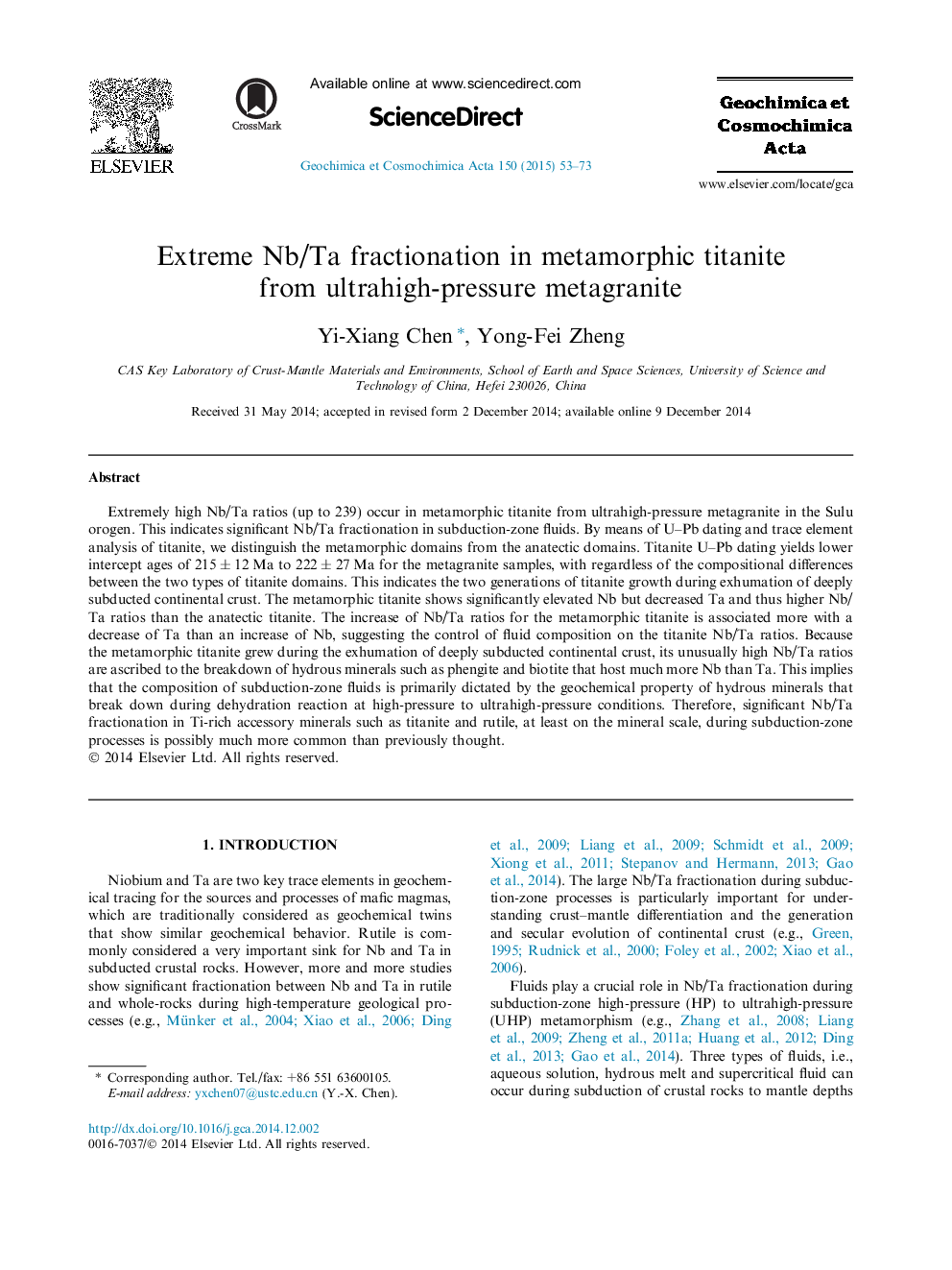| Article ID | Journal | Published Year | Pages | File Type |
|---|---|---|---|---|
| 4701983 | Geochimica et Cosmochimica Acta | 2015 | 21 Pages |
Extremely high Nb/Ta ratios (up to 239) occur in metamorphic titanite from ultrahigh-pressure metagranite in the Sulu orogen. This indicates significant Nb/Ta fractionation in subduction-zone fluids. By means of U–Pb dating and trace element analysis of titanite, we distinguish the metamorphic domains from the anatectic domains. Titanite U–Pb dating yields lower intercept ages of 215 ± 12 Ma to 222 ± 27 Ma for the metagranite samples, with regardless of the compositional differences between the two types of titanite domains. This indicates the two generations of titanite growth during exhumation of deeply subducted continental crust. The metamorphic titanite shows significantly elevated Nb but decreased Ta and thus higher Nb/Ta ratios than the anatectic titanite. The increase of Nb/Ta ratios for the metamorphic titanite is associated more with a decrease of Ta than an increase of Nb, suggesting the control of fluid composition on the titanite Nb/Ta ratios. Because the metamorphic titanite grew during the exhumation of deeply subducted continental crust, its unusually high Nb/Ta ratios are ascribed to the breakdown of hydrous minerals such as phengite and biotite that host much more Nb than Ta. This implies that the composition of subduction-zone fluids is primarily dictated by the geochemical property of hydrous minerals that break down during dehydration reaction at high-pressure to ultrahigh-pressure conditions. Therefore, significant Nb/Ta fractionation in Ti-rich accessory minerals such as titanite and rutile, at least on the mineral scale, during subduction-zone processes is possibly much more common than previously thought.
